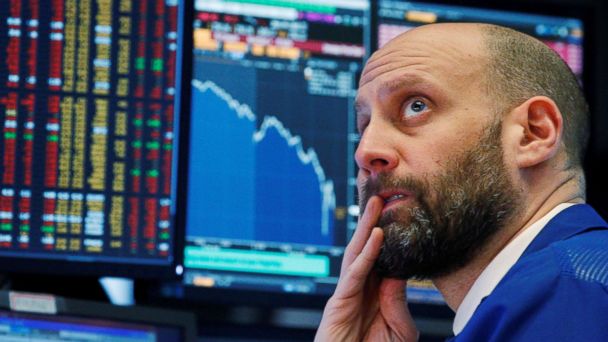Crashing oil and deflationary risk.
That’s the story this morning after the market suffered one of its worst ever drops at the open. The S&P, Dow, and Nasdaq Composite recovered slightly following a 15-minute pause in trading at 9:34 am EST, but remain buried near levels we haven’t seen since 2016.
The coronavirus provided investors with a reason to sell during last week’s plunge. Now, it’s given rise to a much bigger problem; the kind of stuff that could lead to an economic slowdown, or worse.
“The collapse in yields and oil is signaling an imminent recession,” CNBC’s Jim Cramer tweeted several hours before trading opened.
“I think we need to parse everything and remember that while most stocks aren’t buyable, they will get to be that soon enough at this pace.”
He continued, suggesting that anything could happen in response to the “cocktail” of sinking oil and treasury yields.
“The collapse in oil and the collapse in yields are both unprecedented and exceed the chaos of 2007-2009 today. The algorithms operated all night as if trillions of dollars were trading.”
“Uncharted waters,” Cramer observed.
If he’s right, and we’ve truly got another 2008-like crisis on our hands, then that means the market’s approaching something extremely rare.
Something that investors have only witnessed twice in the last 20 years:
A 40% (or more) correction, followed by an immense buying opportunity.
In the post-dot com bubble and post-financial crisis rallies, momentum chasing traders got filthy rich.
From September 2000 to August 2002, the S&P 500 fell over 45%. From October 2007 to March 2009, it dropped roughly 50%.
After bottoming each time, the index soared in the months that followed. It took “buy, hold, and hope” investors years to make their money back in both cases.
Short-term traders, who dumped their positions after the selling started, made out like bandits by comparison.
They didn’t even have to buy at the bottom, either. Simply selling after the initial crunch and re-buying after the market showed signs of a recovery was enough to outperform most investors.
Cramer thinks it could happen again, as do several members of the Wall Street elite.
“The idea that lower gasoline prices is going to put more cash in workers’ pockets and give consumer spending and the economy a boost doesn’t seem to cushion the blow for stock market investors,” said Chris Rupkey, MUFG Union Bank’s chief financial economist, in a note on Sunday.
“They want out. Big time. The sky is falling. Get out, get out while you can. Wall Street’s woes have to eventually hit Main Street’s economy hard.”
Other analysts, like Vital Knowledge founder Adam Crisafulli, also see oil prices as a major limiting factor.
“Crude has become a bigger problem for markets than the coronavirus,” Crisafulli said.
“It will be virtually impossible for the [S&P 500] to sustainably bounce if Brent continues to crater.”
And even if stocks don’t completely crash, short-term traders (who likely exited a few weeks ago) could still “win” the coronavirus-sparked dip. Instead of just selling, some traders also went short on overbought stocks that looked ready to drop.
Even without the help of spiraling oil prices, a possible pandemic, and mounting deflation fears.
Either way, that’s not to say that the time to buy is quite yet. Stocks could continue dropping until the shock of the 20%+ oil plunge wears off.
Once the market stabilizes though, investors need to be ready.
Because missing out on another epic, whipsaw rally – an event that only occurs once every 10 years or so – would be a huge missed opportunity…
…And something that makes “buy and holders” wait months (potentially years) to recoup their losses.
All while short-term traders scalp “easy money” off rebounding stocks.








